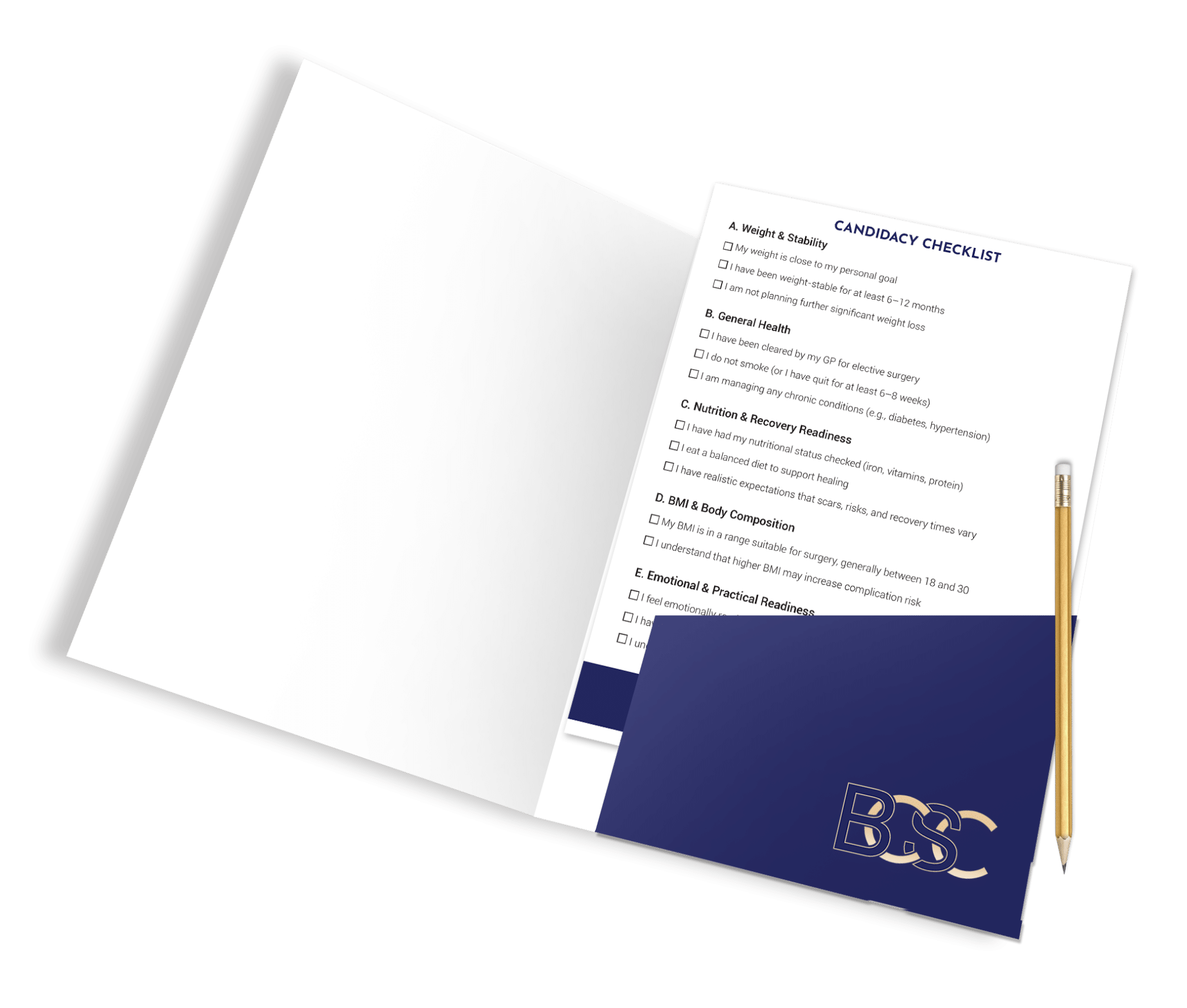Recovering from Lower Trunk Operations Post Weight Loss
Recovering from lower trunk operations post weight loss is a significant stage in the journey of massive weight loss patients. Many individuals who have experienced significant weight loss – whether through bariatric surgery (weight loss surgery), lifestyle changes, or medically supervised weight-loss medications – find themselves with excess skin and fat that does not retract on its own. This excess skin can lead to rashes, hygiene difficulties, mobility issues, and reduced quality of life due to physical limitations.
At Body Contouring Surgery Clinic (BCSC), our team of specialist surgeons performs body contouring surgery and belt lipectomy (body lift) surgery for patients who have achieved a stable weight and are now seeking treatment for loose skin and tissue laxity. Recovery is a vital stage. It influences wound healing and long-term results. This page provides an overview of the recovery process after various lower trunk surgery procedures.
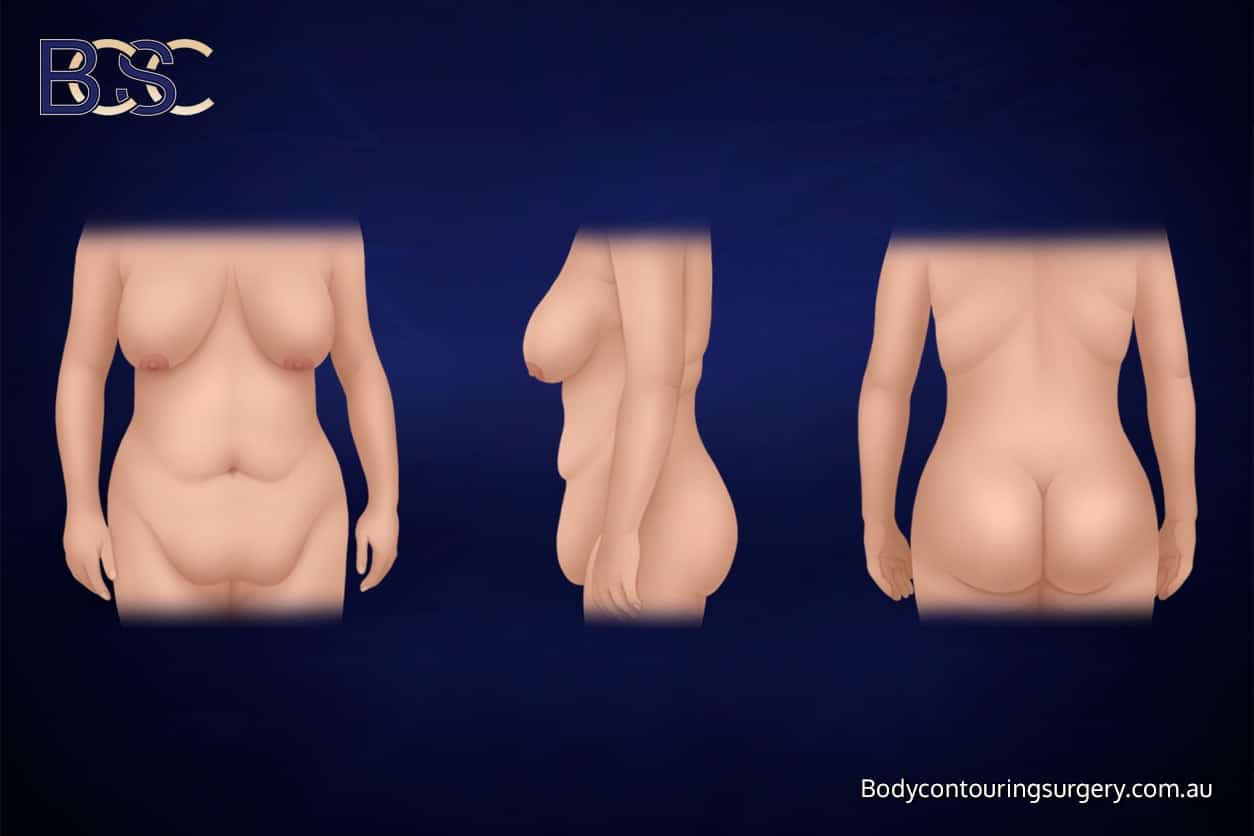
Post weight loss patient with loose skin
Why Recovery Matters After Body Contouring Surgery
Recovery after a surgical procedure is not just about wound healing. It is about giving the body the time and support it needs for proper healing and function. Lower body lift (belt lipectomy) surgery, abdominoplasty (tummy tuck), circumferential belt lipectomy (also referred to as a body lift), thigh lift (thighplasty), panniculectomy (apronectomy), and other body contouring procedures are among the most common operations performed after weight loss. Each surgical procedure has a different recovery period, but they all share similar principles:
- Rest and protection in the first few weeks
- Support with compression garments to manage swelling and promote proper healing
- Close monitoring of wounds to identify wound separation or delayed wound healing early
- Patience with scar management, as scars evolve over 6–12 months
- Gradual return to daily activities under the surgeon’s instructions
General Recovery Principles
Hospital Stay

Recovery after body contouring surgery
Most lower body operations require at least a short hospital stay. Depending on the extent of the surgical procedure, patients may stay one night or several days in hospital.
Initial Recovery Period
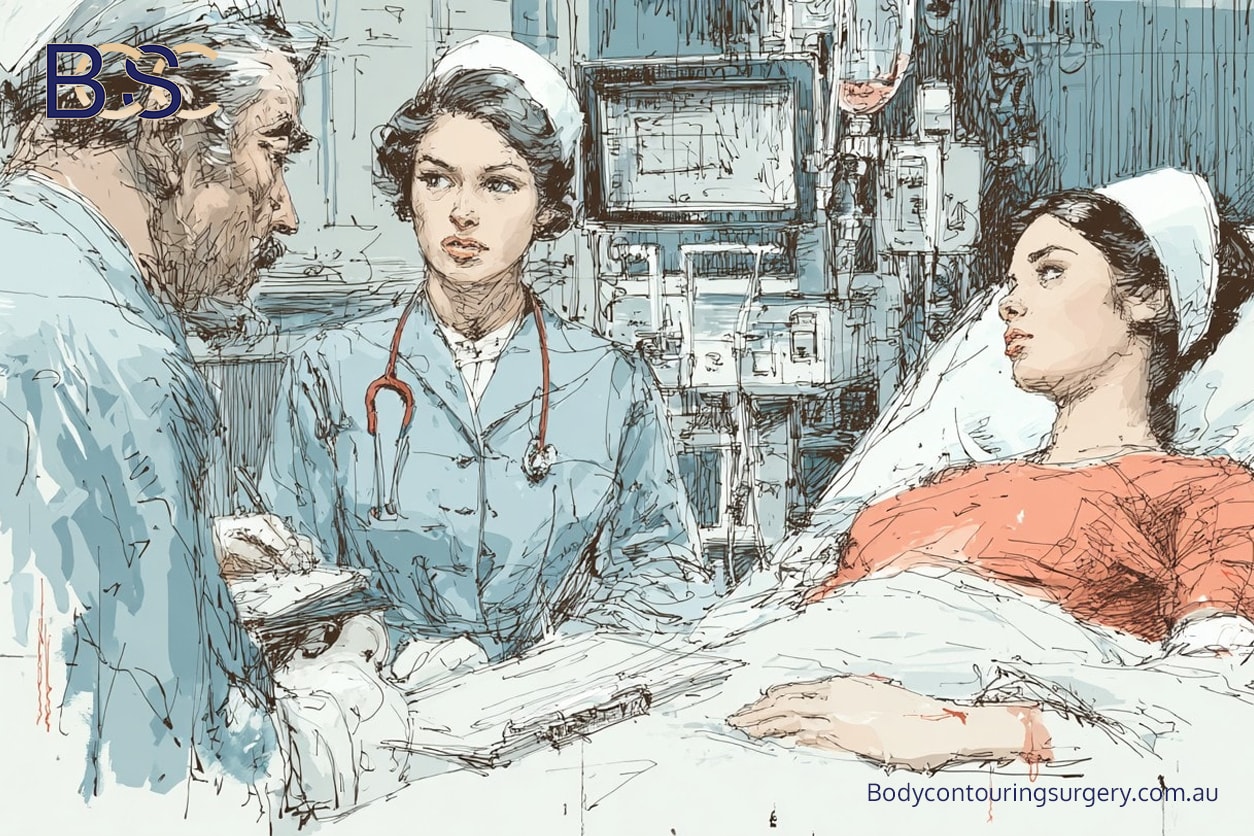
Initial recovery period after body contouring surgery
The first few weeks are focused on rest, pain medication, and wound care. Swelling, bruising, and limited mobility are expected.
Compression Garment Use
Compression garments are typically worn full time for the first 4 weeks and then half time for another 2 weeks. These garments help reduce excess fluid build-up, control swelling, and support wound healing.
Wound Care
Specialist surgeons at BCSC use dressings such as Comfeel or PICO, chosen according to the specific operation. Dressings are changed regularly, and wounds are reviewed closely during the early stages.
Scar Management
Scars are red and firm initially. Over 6–12 months they mature and fade. Patients are advised on scar management options, including silicone therapy, to promote proper healing.
Recovery Timeline: What to Expect
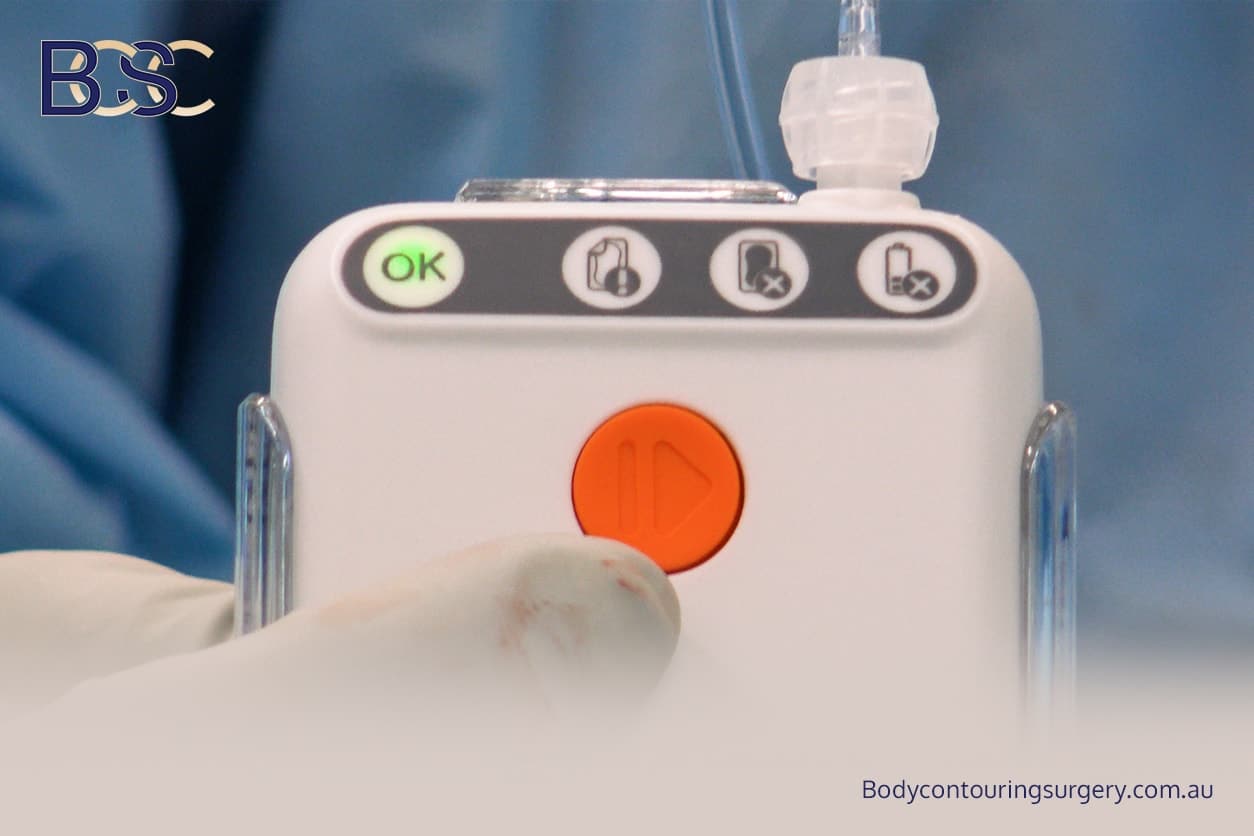
PICO dressing suction box
First Week
- Rest and gentle walking only
- Pain managed with prescribed pain medication
- Surgical drains, if used, are usually removed within a week
Weeks 2–4
- Swelling begins to subside
- Light activities allowed, but no heavy lifting
- Some patients return to desk-based work around weeks 3–4
Weeks 4–8
- Wounds strengthen
- Walking encouraged; avoid strenuous activity
- Compression garment remains important
Months 2–3
- Patients often feel closer to normal
- Scars remain firm, but softening begins
- Gradual return to more active exercise under guidance
6–12 Months
- Swelling resolves fully
- Scars mature and fade
- Long-term outcomes of body contouring surgery and lower body lift (belt lipectomy) procedures become evident
Recovery by Procedure
Abdominoplasty
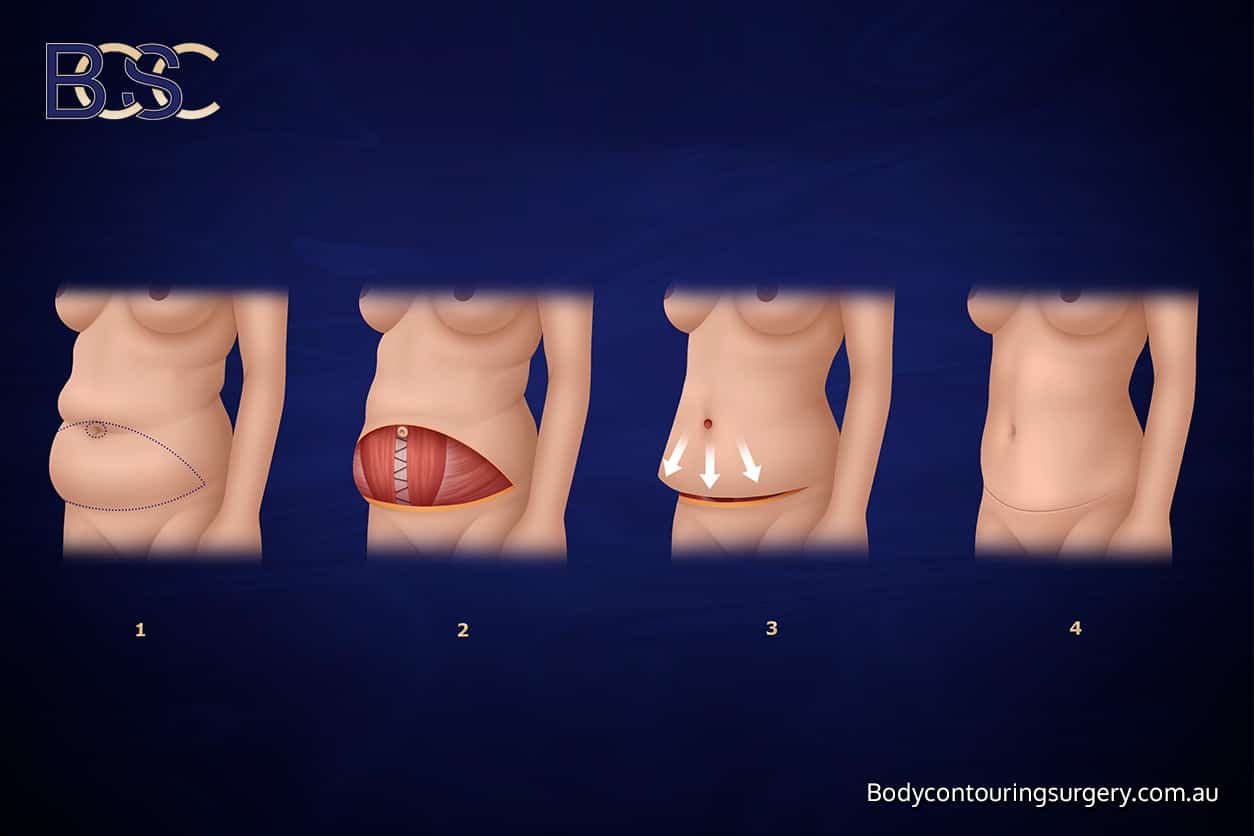
Abdominoplasty
- Removes excess skin and fat from the lower abdomen
- Tightens abdominal muscles if diastasis recti (separated abdominal muscles) is present
- The recovery period is usually 4–8 weeks
Fleur-de-Lis Abdominoplasty
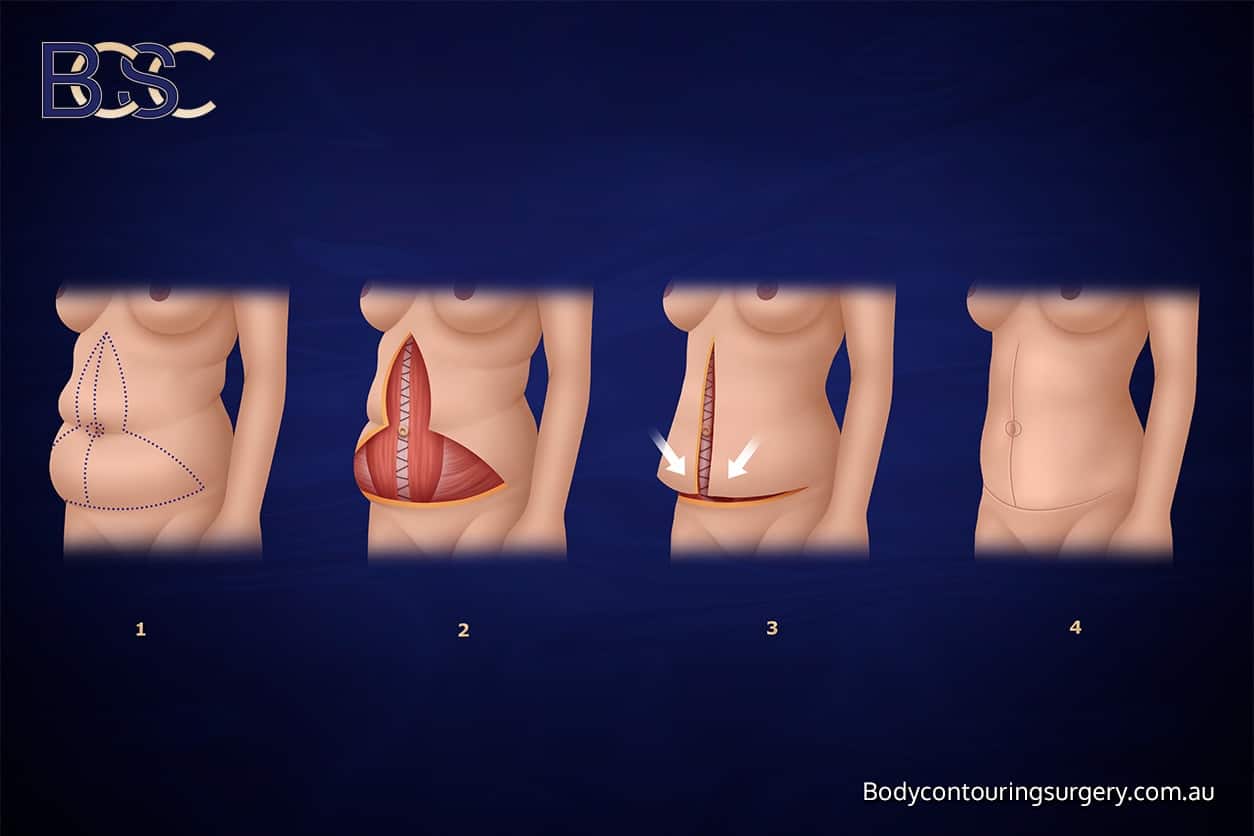
Fleur-de-Lis Abdominoplasty
- Treats both vertical and horizontal excess skin
- Involves a larger skin excision and a longer recovery period
- Close wound monitoring is required
Circumferential Belt Lipectomy (Body Lift Surgery)
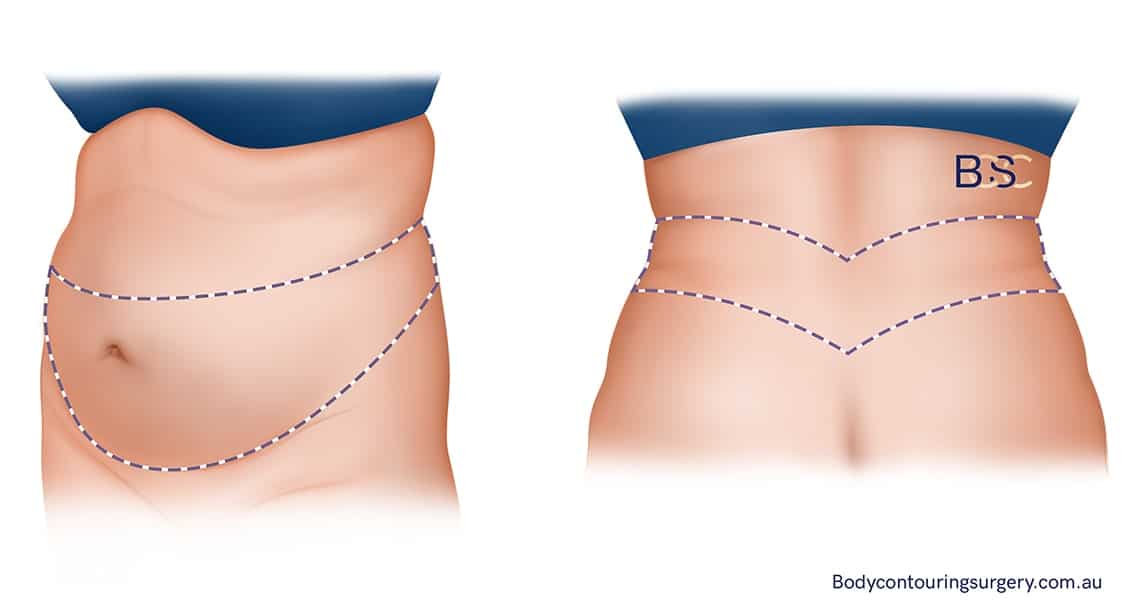
Circumferential Belt Lipectomy
- Removes excess skin 360° around the torso, including the flanks and lower back
- Addresses the abdomen, side, lateral thigh and back area in a single operation
- The recovery period is longer, often 8–12 weeks, before returning to heavier activity
Apronectomy (Panniculectomy)
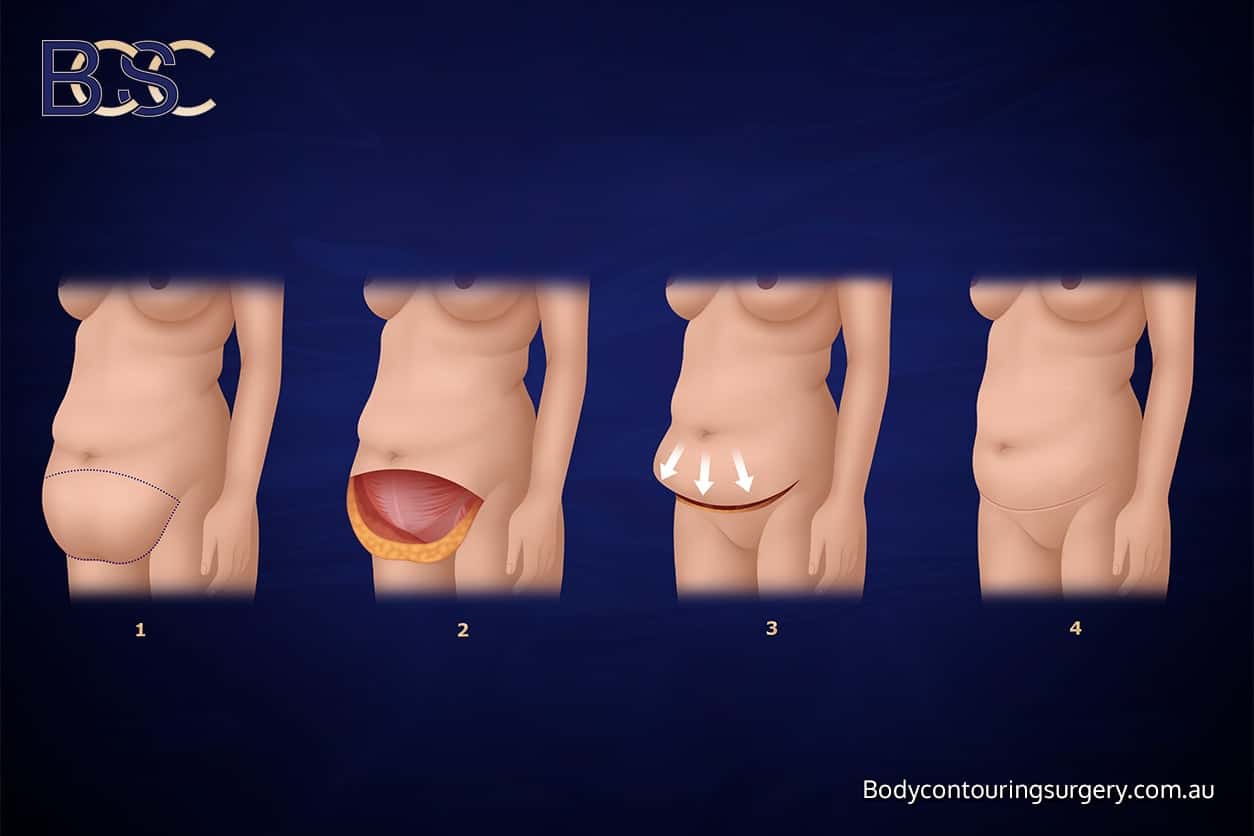
Apronectomy
- Removes an overhanging apron belly (Pannus) of skin
- Can reduce skin-related rashes and hygiene difficulties
- Wound healing requires careful follow-up
Thigh Lift (Inner Thighplasty)
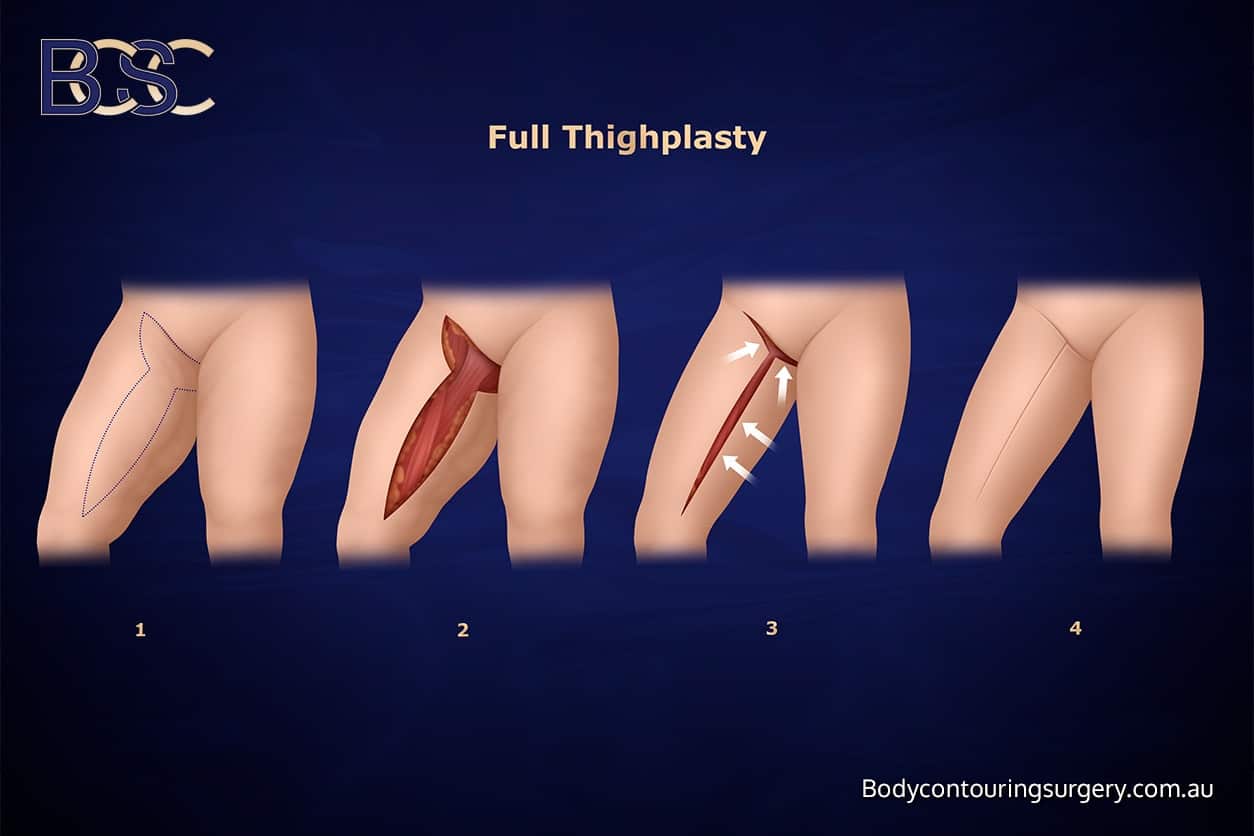
Inner Thighplasty
- Removes redundant skin and fat from the thigh region
- Recovery may be slower due to incision placement near the groin
- Compression garments support the healing process
Upper Body Lift (upper torsoplasty) and Arm Lift (Brachioplasty)
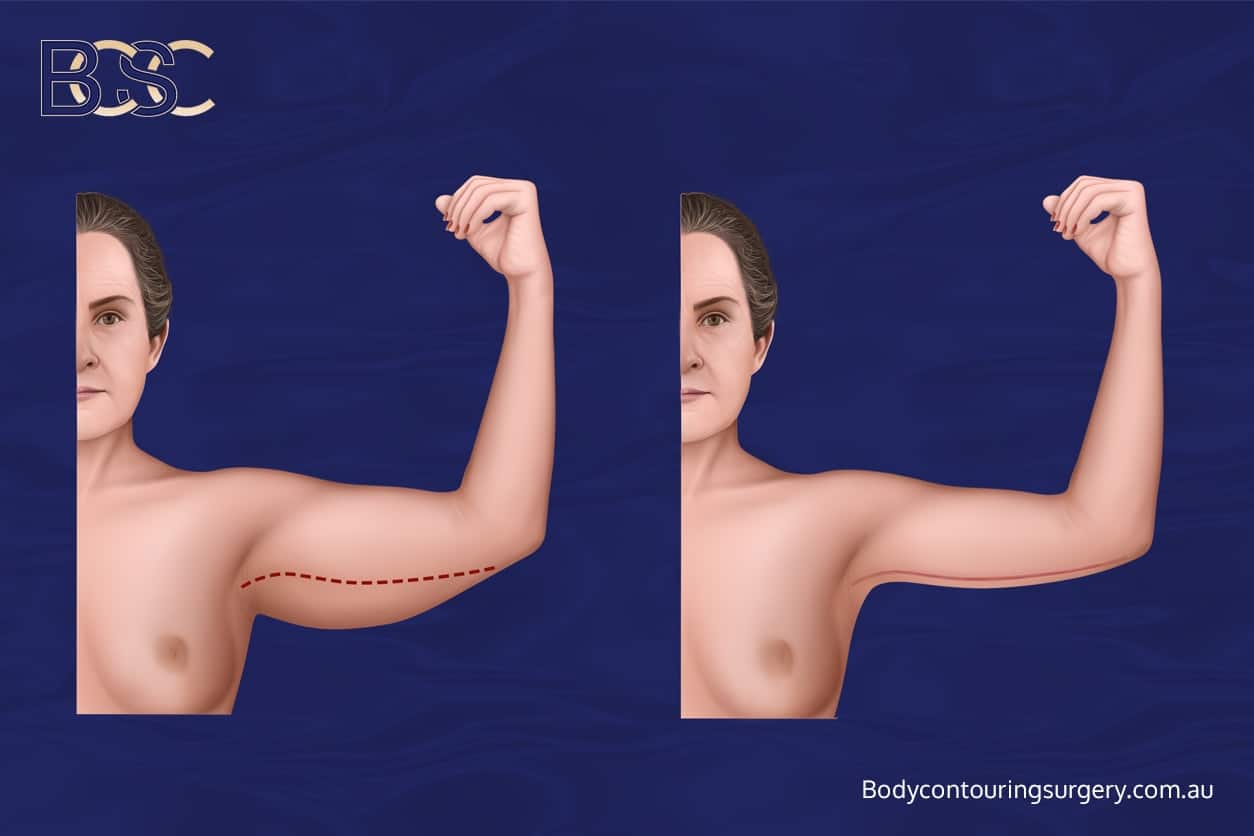
Brachioplasty
- Removes redundant skin across the chest, back, and upper arms
- Often staged separately from lower body surgery
- Follow similar principles of compression, rest, and scar management
Common Patient Questions
How long does it take to recover from skin removal surgery after weight loss?
Most patients need 6–12 weeks before resuming heavier activity. Full scar maturation and final result may take up to 18 months to 2 years.
How does weight loss affect a lower body lift (belt lipectomy)?
Massive weight loss patients often have loose skin, hanging skin, or tissue laxity around the lower abdomen, flanks, and thighs. A lower body lift (belt lipectomy) removes this excess skin and fat to support function and hygiene. The extent of weight loss and skin elasticity influences the surgical procedure and the recovery period.
What is an apron belly (pannus) after weight loss surgery?
An apron belly, also called a pannus, is a large overhanging flap of skin and fat that develops after weight loss surgery (bariatric surgery). It can cause rashes, hygiene difficulties, and discomfort. Apronectomy or panniculectomy is a surgical procedure to remove excess skin in this area.
How long does it take to heal after a lower body lift (belt lipectomy)?
Recovery from lower body lift (belt lipectomy) surgery often takes 8–12 weeks. The first few weeks focus on wound healing and compression garment use. Patients gradually return to exercise after clearance from their surgeon. Long-term scar management continues for up to 12 months.
Possible Complications
Like all surgical procedures, lower body contouring trunk surgery carry risks:
- Wound healing issues or wound separation
- Bleeding or excessive bleeding
- Infection
- Seromas (excess fluid collections)
- Blood clots or deep vein thrombosis
- Delayed scar maturation
- Contour irregularities or asymmetry
- Rarely, the need for revision surgery
Our specialist surgeons discuss these risks during every consultation.
Factors That Influence Recovery
- Type of operation: Larger operations like circumferential belt lipectomy surgery involve longer recovery periods
- Extent of skin excision: Removing more skin and fat requires a longer healing process
- Medical history: Diabetes, smoking, or poor circulation can delay recovery
- Lifestyle: A healthy diet, stable weight, and following surgeon’s instructions will assist the recovery and final result.
- Weight stability: Patients who lose weight and then maintain a stable weight often achieve better healing
Returning to Daily Life
- Work: Desk-based work often possible after 3–4 weeks; physically demanding jobs may require 6–8 weeks
- Exercise: Walking is encouraged early; heavy exercise is delayed until 8–12 weeks post-operation
- Driving: Usually possible after 2–3 weeks, once patients are off strong pain medication and can move with less pain.
Conclusion
Recovery after lower body lift (belt lipectomy) surgery and other body contouring procedures requires patience, planning, and support. At Body Contouring Surgery Clinic, our surgeons – guide patients through every stage. This includes early rest, compression garment use, and long-term scar management. Every patient’s recovery is unique, but with preparation and adherence to post-operative advice, most patients return to daily life within a few months, with recovery continuing throughout the first year.
For patients who lose weight through bariatric surgery or other methods, lower trunk surgery and body contouring surgery can remove excess skin and assist with daily function and hygiene as part of the weight loss journey.
